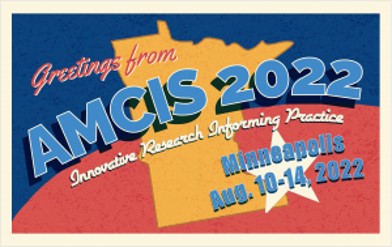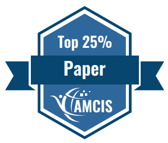SIG DSA - Data Science and Analytics for Decision Support
Loading...
Paper Type
Complete
Paper Number
1503
Description
Citizens in large and modern cities heavily rely on smart and efficient public transportation as an alternative to private cars. Public transportation options are expected to be efficient, consistent, and reliable. For example, users of public buses should be able to use their smart phones to reserve and plan their trip at any time. They should also be able to track in real time their routes and any possible delays or issues. Bus adherence to their schedule in public transportation can be modeled as an NP-hard problem. This is due to the many unpredictable factors that can impact such adherence. In this paper, we used deep neural network and regression models to predict bus adherence to scheduled times. We selected San Antonio Transit system as a problem domain and used a dataset containing a snapshot of the adherence of VIA buses from February 2019. We focused on analyzing the significant routes in the dataset and explored the percentage of buses were on time in these routes. Results revealed better performance of neural network models as compared to regression models.
Recommended Citation
Al-Ramahi, Mohammad; Alsmadi, Izzat; Delgado, Daniel; and Lee, Young, "Prediction and Analysis of Bus Adherence to Scheduled Times: San Antonio Transit System" (2022). AMCIS 2022 Proceedings. 9.
https://aisel.aisnet.org/amcis2022/sig_dsa/sig_dsa/9
Prediction and Analysis of Bus Adherence to Scheduled Times: San Antonio Transit System
Citizens in large and modern cities heavily rely on smart and efficient public transportation as an alternative to private cars. Public transportation options are expected to be efficient, consistent, and reliable. For example, users of public buses should be able to use their smart phones to reserve and plan their trip at any time. They should also be able to track in real time their routes and any possible delays or issues. Bus adherence to their schedule in public transportation can be modeled as an NP-hard problem. This is due to the many unpredictable factors that can impact such adherence. In this paper, we used deep neural network and regression models to predict bus adherence to scheduled times. We selected San Antonio Transit system as a problem domain and used a dataset containing a snapshot of the adherence of VIA buses from February 2019. We focused on analyzing the significant routes in the dataset and explored the percentage of buses were on time in these routes. Results revealed better performance of neural network models as compared to regression models.
When commenting on articles, please be friendly, welcoming, respectful and abide by the AIS eLibrary Discussion Thread Code of Conduct posted here.




Comments
SIG DSA